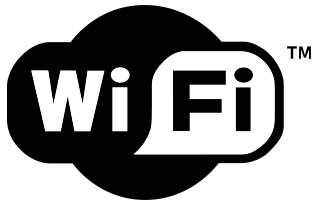
What are wireless networks?
A wireless network is a way to wirelessly connect the computers, smartphones, game consoles and other internet-enabled devices in your home to each other and to the internet. Wireless networks most commonly use what's known as an 'access point' - typically in the form of a wireless router, which manages your home network.
Basic wireless networks can also be created simply by connecting two WiFi devices together, to create what's known as an 'ad hoc' network. Networks that use purpose designed hardware (like wireless routers) are referred to as 'infrastructure' networks.
802.11a, b, g and n - what's the difference?
Nearly all wireless networks use the IEEE 802.11 wireless network standard, which is commonly referred to as WiFi. Within WiFi, there are a number of variations, including 802.11a, 802.11b, 802.11g, 802.11n. While newer 802.11n devices are backwards-compatible with all of the older standards, 802.11b and 802.11g devices operate at a different frequency to 802.11a devices, and won't be able to connect. 802.11a devices are very rare though.
802.11n routers offer substantially better range and signal quality than 802.11b and 802.11g routers too - they use what's known as MIMO (Multiple Input, Multiple Output) antenna technology to achieve this.
Are wireless networks suitable for smart homes?
Many devices in the home these days feature WiFi connections - computers, games consoles, home audio systems, smartphones and even whitegoods like refrigerators.
Because it allows for fast transmission of data (theoretically 54Mbit/s on an 802.11g network), WiFi can be used to stream high definition video content, among other things, and to connect devices anywhere in the home without the need to run cables or conduits. Likewise, it allows powerful control over home automation systems using devices like smartphones and tablets.
But are they ideal for smart homes? The answer to this really depends on your needs. WiFi isn't, for example, sufficient to allow high definition streaming to two different TVs - and if someone on your network's downloading something using the same access point, it may affect even a single video stream.
Likewise, WiFi transmitters use a considerable amount of power (relatively speaking), which makes them less than ideal for simpler applications like curtain or lighting controls. For those purposes, something like a ZigBee system may be more suitable.
In general, WiFi's an excellent addition to any smart home - but it isn't yet a silver bullet for all purposes.
|
Advantages
|
Disadvantages
|





